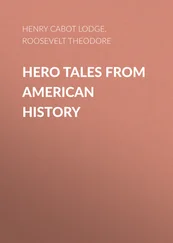The Gilded Age was an epoch of naked greed. Those few capitalists who bothered to defend their motives turned to the science of the day. In 1859, the great British naturalist Charles Darwin (1809-82) published On the Origin of Species by Means of Natural Selection. This book set forth the theory of evolution, arguing that in nature, only the fittest—the strongest, the most cunning, the ablest—creatures ultimately survive to reproduce their kind. Capitalists translated nature into economics, arguing that the state should not interfere in economic life because people at the top of the socioeconomic heap were there because they were the fittest, having survived the battles of the marketplace. This concept was Social Darwinism.
Yet the era was not entirely heedless or heartless. Andrew Carnegie (1835-1919) came to the United States with his impoverished family from Scotland in 1848. As a youth, Carnegie worked in a cotton factory, then in a telegraph office, and finally for the Pennsylvania Railroad, rising quickly through the executive ranks until he became head of the western division in 1859. Carnegie resigned from the railroad in 1865 to form the Keystone Bridge Company, the first in a series of iron and steel concerns he owned. He consolidated his holdings in 1899 as the Carnegie Steel Company, then sold it to J.P. Morgan’s United States Steel Company in 1901 for $492 million-roughly the equivalent of five billion of today’s dollars. (And income tax didn’t exist in 1901!)
Carnegie was as ruthless as any of his fellow robber barons, wielding his steel company like a club, knocking out all competition and (for a time) knocking out the American industrial union movement as well. But in 1889, Carnegie delivered a speech titled “The Gospel of Wealth,” in which he reeled out the Social Darwinist line that wealth was essential for civilization and that the natural law of competition dictated that only a few would achieve wealth. Yet Carnegie added a unique twist. The rich, he proclaimed, had a responsibility to use their money for the clear benefit of society.
From 1901 until his death, Carnegie dedicated himself to philanthropy, donating more than $350 million to a wide spectrum of causes. He founded more than 2,500 public libraries throughout the United States; he established the Carnegie Institute of Pittsburgh, the Carnegie Institution at Washington, the Carnegie Foundation for the Advancement of Teaching, the Carnegie Endowment for International Peace, and the Carnegie Corporation of New York. The truly remarkable thing is that many other robber barons took the Gospel of Wealth to heart. Rail magnate Leland Stanford founded and endowed Stanford University. Rockefeller endowed the University of Chicago, created the Rockefeller Institute of Medical Research, established the Rockefeller Foundation, and bought vast tracts of land that became national parks. Many other wealthy individuals did similar deeds and continue to do so today.
If, blooming among the uncut weeds of wild greed, the Gospel of Wealth seemed miraculous, so did the incredible series of inventions that burst forth during what otherwise might have been a dull, hard Age of the Machine. Americans of the post-Civil War era were extraordinarily industrious and inventive.
Alexander Graham Bell was born in 1847 in Scotland and grew up in England. His grandfather and father earned famed as teachers of the deaf, and Alexander likewise followed this career, continuing in it after the family immigrated to Canada in 1870. In 1872, Alexander Graham Bell became a professor of vocal physiology at Boston University. His profound interest in the nature of speech and sound was combined with a knack for things mechanical, and he began working on a device to record sound waves graphically in order to show his deaf students what they could not hear. Simultaneously, Bell was also trying to develop what he called the harmonic telegraph, a device capable of transmitting multiple telegraph messages simultaneously over a single line.
About 1874, the two inventions suddenly merged in his mind. Bell wrote in his notebook that if he could “make a current of electricity vary in intensity precisely as the air varies in density during the production of sound,” he could “transmit speech telegraphically.”
The insight was staggering: Convert one form of intelligible energy (sound) into another (modulated electric current). With his tireless assistant, Thomas Watson, Bell worked on the device for the next two frustrating years. One day, in 1876, while Watson maintained what he thought would be another fruitless vigil by the receiver unit in the next room, Bell made adjustments to the transmitter. In the process, Bell upset a container of battery acid, which spilled on his lap. Burned by the acid, he inadvertently made the world’s first phone call—a call for help: “Mr. Watson, come here, I want you.” The telephone caught on quickly, and the Bell Telephone Company, founded by Alexander’s father-in-law, Gardner G. Hubbard, became a utility of vast proportions and incalculable importance.
Bell was a teacher of the deaf who taught the world to hear over unlimited distances. Thomas Alva Edison, almost totally deaf because of a childhood accident, helped the world to, see. Born in Milan, Ohio, in 1847, Edison had little education and less money when he started selling candy and newspapers on trains of the Grand Trunk Railroad. What Edison did have was a passion for tinkering and a fascination with an invisible force called electricity. His first commercially successful invention was an electric stock ticker, which delivered stock quotations almost instantaneously and which J.P. Morgan eagerly snatched up. Edison plowed his profits into creating a state-of-the-art laboratory/workshop first in Newark, then in Menlo Park, New Jersey. By the end of his long creative life, Edison had some 3,000 patents to his name, covering more than 1,000 separate inventions.
Edison’s greatest single invention was undoubtedly the incandescent electric lamp, which he publicly demonstrated on December 31, 1879, after many tortured months of trial and error. By 1881, Edison had built the world’s first central generating plant, on Pearl Street in lower Manhattan. Within a very short time, electricity became a fixture not only of American life, but of life throughout the world. The incandescent lamp spawned many industries dedicated to producing an array of electrical devices. It is hardly necessary to point out how much our civilization now depends on what Edison began, but it is significant that, after he died on October 18, 1931, plans to dim the lights of the nation for a full minute as a memorial gesture had to be scrapped. Electric lighting was just too important.
Recorded Sound, Recorded Light
Although the incandescent lamp was Edison’s single greatest invention, it was not his favorite. Two years before he demonstrated his lamp, he designed a device intended to raise some quick cash for his still-fledgling laboratory. Edison drew a crude sketch of the device he wanted built and then turned it over to an assistant, John Kruesi, to build. The man dutifully followed his employer’s instructions, without any idea of what the device was supposed to do. A grooved metal cylinder was turned by a hand crank; a sheet of tinfoil was stretched over the cylinder; the point of a stylus rested against the tinfoil, and the other end of the stylus was affixed to a flexible diaphragm. Kruesi presented the finished model to Edison, who took it, turned the crank, and spoke into the diaphragm. The stylus, moving with the vibration of his voice, embossed the tinfoil. Then Edison stopped cranking and speaking, reapplied the stylus to the cylinder, and turned the crank. From the diaphragm, the machine recited “Mary Had a Little Lamb.” Thomas Edison had invented the phonograph.
Читать дальше












